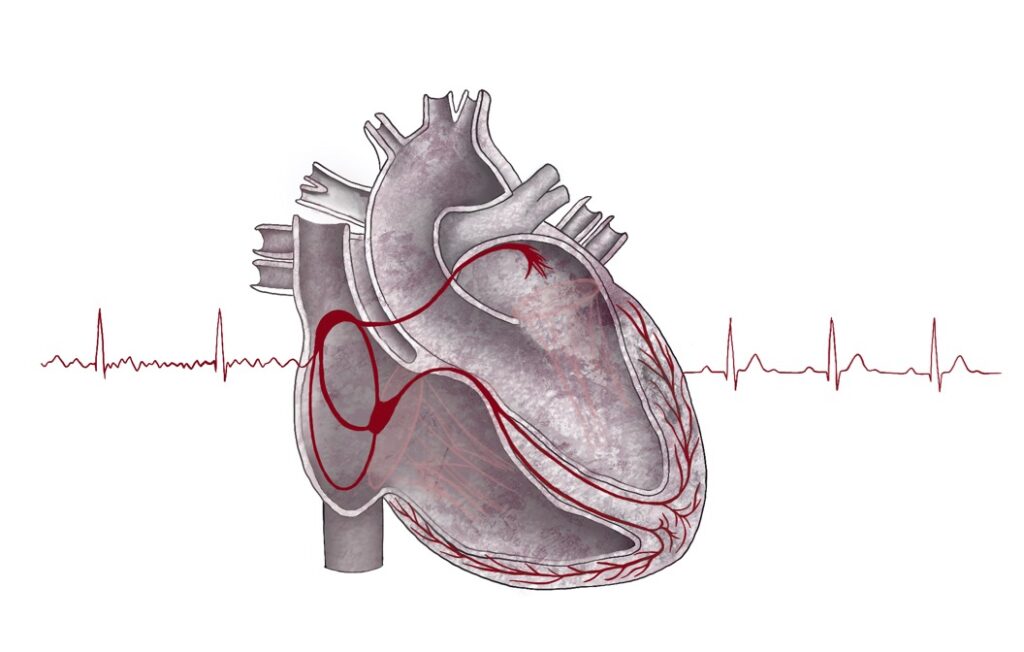
This STEAM project focuses on the objective ‘explain the structure and function of the heart’ and to accompany the written assignment, I composed the above sketch. The art piece shows an illustration of the heart detailing the movement of electrical stimulus through the heart causing the contraction of heart muscle; initiated by the sinoatrial (SA) node, known as the pacemaker of the heart, then spreading through the atria. Additionally, on either side of the heart, I included electrocardiogram sketches for both atrial fibrillation (left) and a normal heart rate result (right) to depict the measurement of electrical activity of the heart.

My assigned partner is Heather, and her topic for the STEAM Project is about The Structure and Functions of the Heart. I read through the article she wrote, and she descriptively writes about the functions and the anatomy of the heart.
The heart has an important function because it provides oxygen that is transported through the blood as it circulates the human body. There are two systems of the heart, the pulmonary circuit and the systemic circuit. The pulmonary circuit’s job is to transport blood to and from the lungs to exchange gas, and the systemic circuit’s job is to transport the oxygenated blood all throughout the human body and to return back blood that has been deoxygenated, and this cycles for as long as the human body is alive. The heart has three layers and how thick the heart wall is varies throughout the heart with the left and right ventricles. The innermost endocardium, middle myocardium, and the outermost epicardium are the three layers of the cardiac muscle that are attached to the pericardium. The muscle is made up of short and striated fibres with one or two nuclei, some T tubules, and a gap junction in-between the cells. The heart has a property of both the smooth muscle and a skeletal muscle that has four chambers. The right and left ventricles and the right and left atrias. The left atrium receives rich oxygenated blood from the lungs and the right atrium receives poor oxygenated blood that comes from the body. The atria contracts to push out blood into the lower chambers of the heart. The gas exchange occurs at the pulmonary capillaries of the lungs where the oxygen that goes into the body and the carbon dioxide goes out. The heart’s function is to deliver oxygen by oxygenating deoxygenated blood.